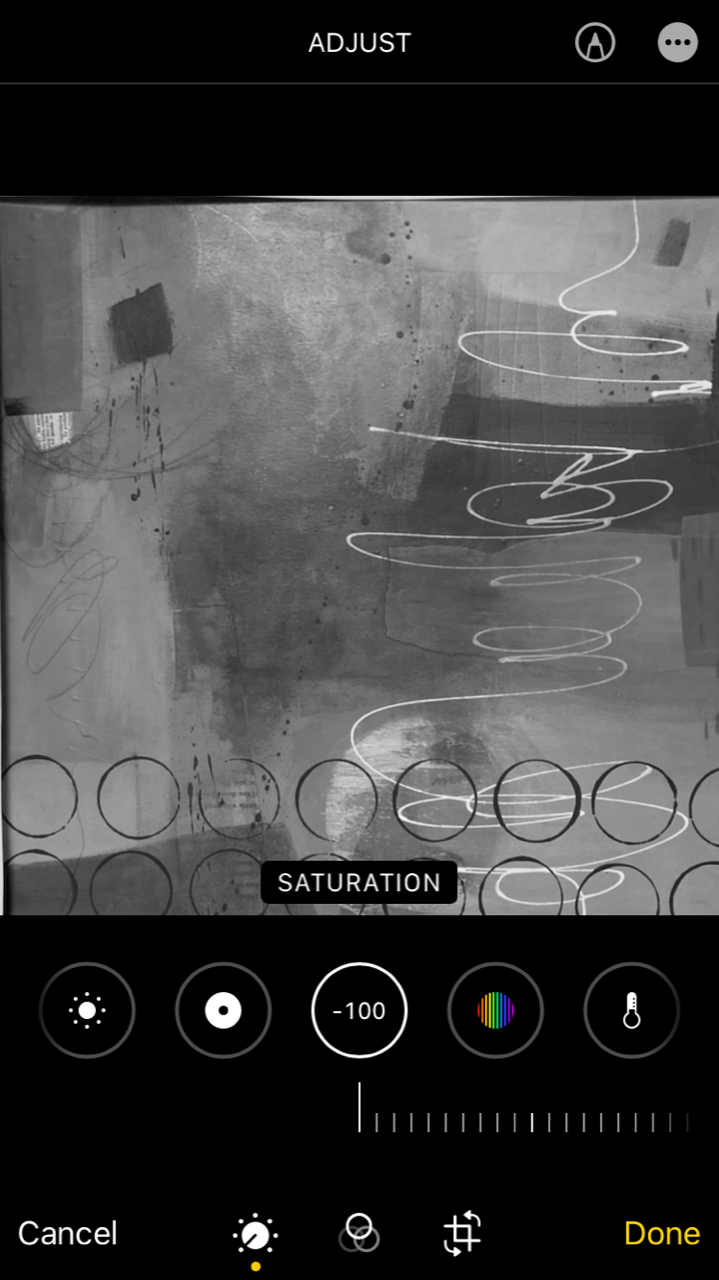Reviewing Your Work
This is what I start with - YIKES!
All artists who create non-representational, abstract and even representational work will inevitably come to the question, “How do I know when a painting (or piece of art), is done?” Here are a few tips, tools and techniques that I have used and found helpful when I am getting to the end of a painting.
That’s a little better.
Cut a mat to the approximate size that you will be framing or mounting the artwork. Reduced the visual clutter of the extra paint and marks around the edges.
Hang it up and walk back at least 10 feet. Does it have appeal? Is there something about it that makes you want to take a closer look?
Use the paper or mat board that you removed from the center of your viewing mat and cut away one quarter. I have a 16” X 16” opening, so from the section I cut away I removed an 8” X 8” square. This gets trickier as you work larger but taping paper, even plain newsprint can be helpful to make this tool.
Place the mask over the painting so it covers each of the four quadrants. look at each quadrant at a time. Are they different from each other? Is there variety of value, marks, color, shape or whatever you are trying to engage the viewer with in your work?
Does each quadrant have something interesting? They don’t all have to. You can surely have a quiet area if you are highlighting something else. But there should be variety and something for the viewer to enjoy in each section of your painting.
It’s useful to check for a variety of values in your work. If everything is very dark, light or midtone nothing will stand out and there will less visual variety. So, I use my phone photo editing and turn the saturation down to -100 or essentially, black and white. This allows me to see if there are dark, light and midtone areas present without the distraction of color (which can be quite deceiving).
Then I crop out the mat or paper so I have only the artwork.
Another useful tool is Adobe Capture. It is a free app that allows you to do several things with your photos. I find it very useful when I am critiquing my artwork. Fifth row, far right.
It has several useful features that you can check out if you decide to use this app. But, the LOOKS feature breaks down the image into light, medium and dark tones. It also gives you some proportions. Variety of value helps keep the work interesting and keeps the viewer’s eye moving.
This piece is part of my current series, scheduled to be in my June Featured Artist show at The ARTery Gallery in Milford, PA. I hope that these ideas had some value for you. I know that when I get close to thinking something is done, I like to check that I’ve hit some key art elements. It’s helpful and it can help with the question “How do I know when it’s done?”
Thanks for checking out the blog. Feel free to leave a comment or ask a question. I’d love to hear how you analyze your work when you are nearing the end of it. Please share so this blog can be a valuable resource for others. Thank you!
Have a creative week!
with gratitude,
Claude










